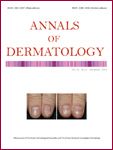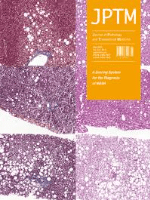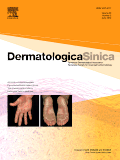
Dermatopathology
Scope & Guideline
Advancing knowledge in skin pathology.
Introduction
Aims and Scopes
- Histopathological Analysis of Skin Disorders:
The journal emphasizes the importance of histopathological examination in diagnosing various skin conditions, including tumors, inflammatory diseases, and infectious processes. - Integration of Advanced Technologies:
Research often explores the application of advanced technologies such as artificial intelligence and deep learning in the diagnosis and classification of dermatopathological specimens. - Clinical Correlation and Case Reports:
The journal frequently publishes case reports that provide clinical correlations to histopathological findings, enhancing the understanding of rare and complex skin diseases. - Immunological and Molecular Insights:
There is a focus on the immunological aspects of skin diseases, including the exploration of biomarkers and molecular characteristics that aid in diagnosis and treatment. - Emerging Trends in Dermatopathology:
The journal aims to highlight emerging trends in dermatopathology, including novel therapeutic approaches and the evolving landscape of skin disease diagnostics.
Trending and Emerging
- Artificial Intelligence and Machine Learning Applications:
There is a growing trend towards utilizing AI and machine learning technologies to enhance diagnostic accuracy and workflow efficiency in dermatopathology. - Multidisciplinary Approaches:
Emerging research emphasizes collaborative approaches that integrate dermatopathology with other medical specialties, reflecting a trend towards holistic patient care. - COVID-19 Related Dermatological Studies:
The impact of COVID-19 on dermatological conditions and vaccine-related skin reactions has become a significant area of interest, showcasing the pandemic's influence on dermatopathology. - Personalized Medicine in Dermatology:
The journal is increasingly focusing on personalized medicine, highlighting research that tailors dermatological treatment based on genetic and molecular profiling. - Novel Therapeutic Strategies:
Research exploring new therapeutic strategies for skin diseases, including immunotherapy and targeted therapies, is gaining traction, reflecting advancements in treatment options.
Declining or Waning
- Traditional Histopathological Techniques:
There appears to be a waning interest in classical histopathological techniques without integration of modern technologies, as the field increasingly embraces advanced imaging and AI solutions. - General Dermatopathology Reviews:
Comprehensive reviews on general dermatopathology topics are becoming less frequent, possibly as the field moves towards more specialized and niche areas of research. - Non-skin Related Pathologies:
Research focusing on non-skin related pathologies or broader systemic diseases with minimal dermatological relevance has been observed to decline in frequency. - Basic Dermatology Education:
There seems to be a reduced emphasis on foundational dermatology education topics, as the journal shifts towards more complex and specialized cases. - Epidemiological Studies:
Research centered solely on epidemiological studies of skin diseases without accompanying clinical or histopathological insights has become less prominent.
Similar Journals

JOURNAL OF INVESTIGATIVE DERMATOLOGY
Shaping the Future of Skin Research Since 1945JOURNAL OF INVESTIGATIVE DERMATOLOGY, published by Elsevier Science Inc, stands at the forefront of research in the fields of dermatology, biochemistry, cell biology, and molecular biology. With an impressive impact factor reflecting its Q1 ranking in Dermatology and Biochemistry, this journal provides a vital platform for disseminating groundbreaking research and innovative studies that drive forward our understanding of skin biology and disease. The journal has maintained a distinguished presence since its inception in 1945, successfully converging decades of scientific inquiry and expertise. It ranks among the top journals in medicine and dermatology, holding a remarkable 7th place out of 142 in the Scopus Medicine Dermatology category, signaling its influence and relevance in the academic community. Researchers, professionals, and students alike will find valuable insights into cutting-edge investigations and methodologies to advance their own studies in skin health and pathology. While the journal is not an open access publication, access options remain robust for institutions and individuals committed to the advancement of dermatological science.

Journal of Dermatology & Dermatologic Surgery-JDDS
Empowering Dermatology Through Collaborative ResearchJournal of Dermatology & Dermatologic Surgery (JDDS) is a premier open access journal published by Wolters Kluwer Medknow Publications since 2018. This journal serves as a vital platform for the dissemination of cutting-edge research and advancements in the field of dermatology and dermatologic surgery. With its ISSN 2352-2410 and E-ISSN 2352-2429, JDDS strives to present high-quality articles that encompass clinical studies, innovative surgical techniques, and comprehensive reviews, thereby catering to the interests of researchers, medical professionals, and students alike. The journal has gained recognition within the academic community, evidenced by its Scopus ranks, placing it 237th out of 551 in the Medicine - Surgery category and 70th out of 142 in Medicine - Dermatology. The open access model not only enhances visibility but also encourages global collaboration and knowledge sharing in the rapidly evolving field of dermatology. Targeting the needs of diverse audiences, JDDS continues to foster an environment for scholarly communication and contributes significantly to the advancement of dermatologic sciences.

Acta Dermatovenerologica Croatica
Exploring New Frontiers in Dermatological ScienceActa Dermatovenerologica Croatica is a premier journal dedicated to the fields of dermatology and venereology, published by the Croatian Dermatovenereological Society. Established in 1994, this journal has been a vital platform for disseminating research and advancements in the understanding and treatment of skin diseases and sexually transmitted infections. Although it is currently classified in the Q4 quartile for dermatology, infectious diseases, and miscellaneous medicine, it provides a unique opportunity for emerging researchers and seasoned professionals to contribute to a growing body of knowledge. Based in Zagreb, Croatia, the journal emphasizes free access to information that enhances clinical practices and scientific understanding among dermatologists and venereologists worldwide. As the journal approaches its 30th anniversary, it continues to aim for excellence in research quality, fostering collaboration, and innovating in the ever-evolving fields it represents.

Annals of Dermatology
Pioneering insights into skin health and disease.Annals of Dermatology is a prestigious academic journal published by the Korean Dermatological Association, focusing on the latest research and advancements in the field of dermatology. With a commitment to advancing knowledge in skin health and disease, this journal serves as a vital resource for researchers, clinicians, and students working in dermatology and related disciplines. Since its inception in 1989, it has evolved to consolidate its position in the academic community, boasting a Q2 ranking in the 2023 Dermatology category and a Scopus rank of #87 out of 142, placing it in the 39th percentile. Although it operates under a subscription model, the journal's impact factor reflects its significance in advancing dermatological research, attracting innovative studies and reviews that shape clinical practice. With a publication history extending from 1989 to 1996 and then from 2008 to the present, Annals of Dermatology continues to be an essential publication for those devoted to improving skin health.

Journal of Pathology and Translational Medicine
Championing Open Access in Pathology ResearchThe Journal of Pathology and Translational Medicine, published by the Korean Society of Pathologists, is a distinguished peer-reviewed Open Access journal that has been at the forefront of advancing the field of pathology and histology since its inception in 1985. With an established ISSN of 2383-7837 and an E-ISSN of 2383-7845, the journal serves as a vital platform for disseminating high-quality research, fostering collaboration among professionals and offering valuable insights into both clinical applications and theoretical advancements. Recognized for its influence in the field, it holds a commendable Q2 ranking in both Histology and Pathology & Forensic Medicine categories in 2023, and ranks #52/208 in Scopus for Medicine – Pathology and Forensic Medicine, demonstrating its impact and reach within the academic community. Located in South Korea at 1209 Gwanghwamun Officia, 92 Saemunan-ro, Jongno-gu, Seoul 03186, this journal not only caters to researchers and professionals but also supports students striving to deepen their understanding of pathology. Join the growing body of knowledge and stay updated with the latest findings in this essential field of study through the journal's open access format, promoting worldwide accessibility and engagement.

Journal of Cutaneous Immunology and Allergy
Connecting experts to enhance the dialogue in dermatology and immunology.The Journal of Cutaneous Immunology and Allergy, published by FRONTIERS MEDIA SA in Switzerland, is an esteemed Open Access platform dedicated to advancing research in the intersecting fields of dermatology, immunology, and allergy. Since its inception in 2018, this journal has provided a vital resource for the dissemination of innovative research findings and critical reviews, enhancing our understanding of cutaneous conditions related to immune responses. Although currently classified in the Q4 quartile in both Dermatology and Immunology & Allergy categories as of 2023, the journal continues to strive for recognition within the scientific community, encouraging collaboration and knowledge sharing among researchers, clinicians, and experts. The journal boasts an E-ISSN of 2574-4593 and is committed to making high-quality research freely accessible to all, thus fostering greater insights into the complexities of skin-related immune disorders. Join us in this journey to explore the forefront of cutaneous research and contribute to the evolving dialogue in this dynamic field.

Turk Dermatoloji Dergisi-Turkish Journal of Dermatology
Illuminating the path for dermatology professionals worldwide.Turk Dermatoloji Dergisi-Turkish Journal of Dermatology, published by Wolters Kluwer Medknow Publications, is a prominent platform dedicated to advancing the field of dermatology in Turkey and beyond. With an ISSN of 1307-7635 and an E-ISSN of 1308-5255, this journal plays a vital role in disseminating contemporary research and clinical advancements within the domain. While it is positioned in the Q4 quartile of dermatology journals, its contributions are essential for academics, medical practitioners, and students averse to the latest trends and breakthroughs in skin health. The journal assures accessibility to a broad audience, fostering knowledge exchange, collaboration, and innovation. Given its unique perspective rooted in Turkish dermatological practices, the Turkish Journal of Dermatology serves as a significant resource for enhancing professional competence and driving forward the science of dermatology through its vivid discussions and case studies. For researchers seeking a dedicated venue to publish their work or for professionals eager to stay informed, this journal is an indispensable resource in the ever-evolving landscape of dermatology.

Dermatologica Sinica
Advancing Dermatological Science for a Healthier TomorrowDermatologica Sinica, published by Wolters Kluwer Medknow Publications, is an esteemed open-access journal in the field of dermatology that has been disseminating critical research since its inception in 2005. With an E-ISSN of 2223-330X and an ISSN of 1027-8117, this journal presents a platform for researchers, clinicians, and students to share cutting-edge findings and advancements in dermatological science. As of 2023, it proudly ranks in the Q2 category of dermatology journals and holds a notable position at rank #62 out of 142 in the Scopus Medicine - Dermatology category, placing it in the 56th percentile for impact. The journal transitioned to an open-access model in 2016, enhancing accessibility and visibility for groundbreaking studies worldwide. With a commitment to fostering innovation in the dermatological community, Dermatologica Sinica aims to advance the understanding and treatment of skin diseases while encouraging scholarly dialogue among practitioners and researchers across the globe.

JOURNAL OF CUTANEOUS PATHOLOGY
Decoding the Complexities of Cutaneous ConditionsJOURNAL OF CUTANEOUS PATHOLOGY, published by WILEY, serves as a vital resource in the fields of dermatology, pathology, and histology, reflecting its distinguished position with impressive categorization quartiles: Q2 in Dermatology and Pathology and Forensic Medicine, and Q3 in Histology for 2023. Established in 1974, this esteemed journal features peer-reviewed research that drives advancements in understanding skin diseases, with a convergence period extending to 2024. The journal's impactful contributions are evident through its Scopus rankings, placing it among the top tiers of its category, specifically holding the 52nd rank in Dermatology. Researchers, professionals, and students will find the journal invaluable for its rich content and critical insights into cutaneous pathology, despite its current non-open access status. The journal's dedication to fostering knowledge in this specialized field underlines its significance as a go-to reference for ongoing scholarship and clinical practice.

VETERINARY DERMATOLOGY
Transforming knowledge into practice for healthier animals.Veterinary Dermatology is a prestigious peer-reviewed journal dedicated to advancing the field of veterinary dermatology, published by Wiley. With a longstanding commitment to disseminating high-quality research since its inception in 1990, this journal has garnered significant recognition, achieving a commendable Q1 ranking in the Veterinary (miscellaneous) category for 2023 and ranking #42 out of 194 in the General Veterinary category on Scopus, placing it within the 78th percentile. Although it operates primarily on a subscription basis, the journal offers vital insights into the latest developments, clinical practices, and case studies in veterinary skin disorders. By serving as a crucial platform for researchers, veterinary professionals, and students, Veterinary Dermatology empowers its audience with the knowledge necessary to enhance animal healthcare and well-being across diverse environments. With its focus on cutting-edge research and its contribution to the global veterinary community, this journal remains an indispensable resource for those dedicated to the field.